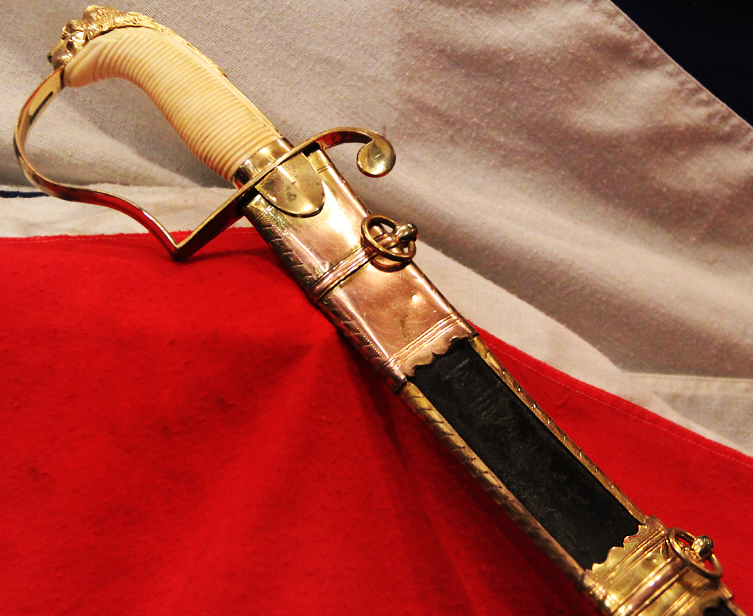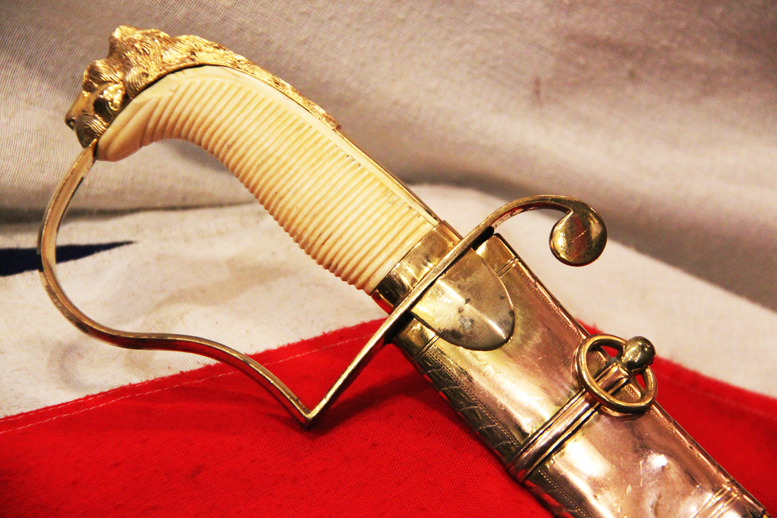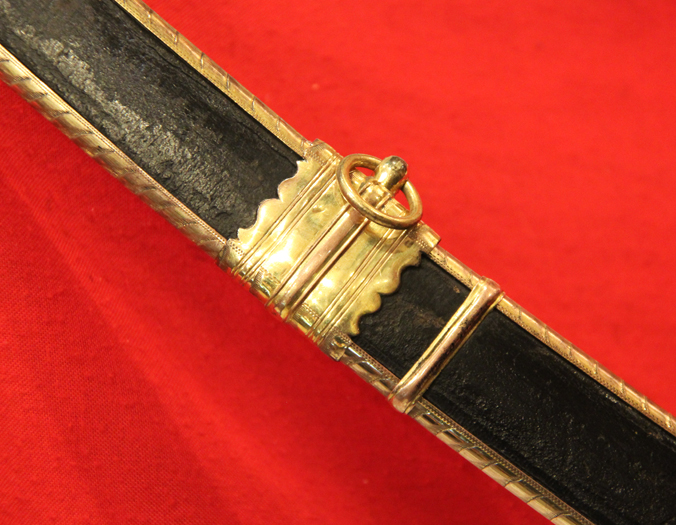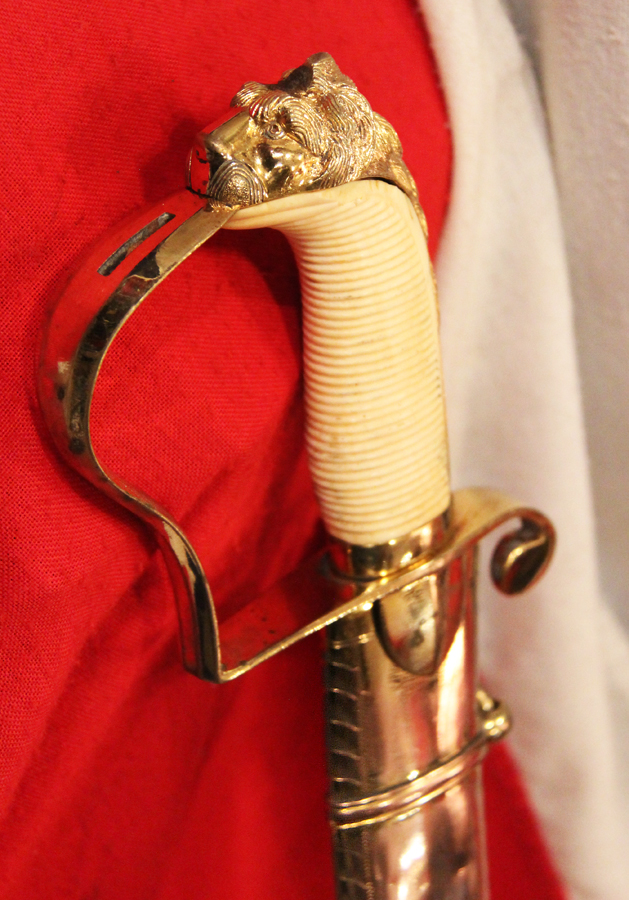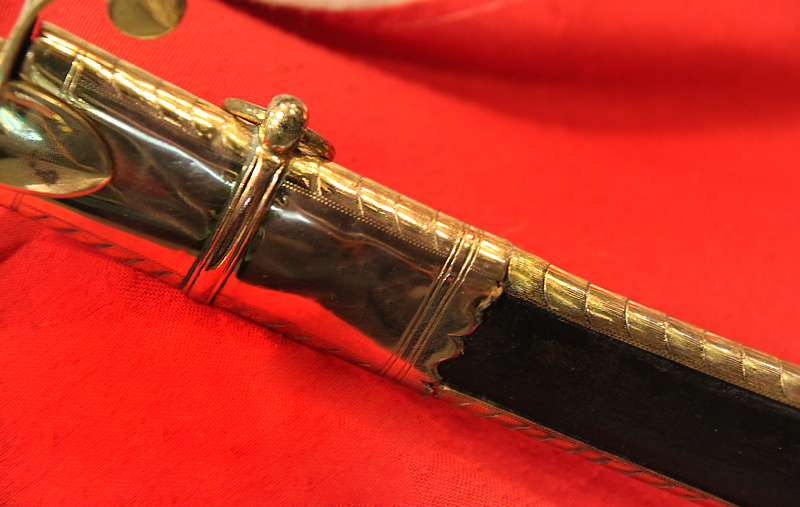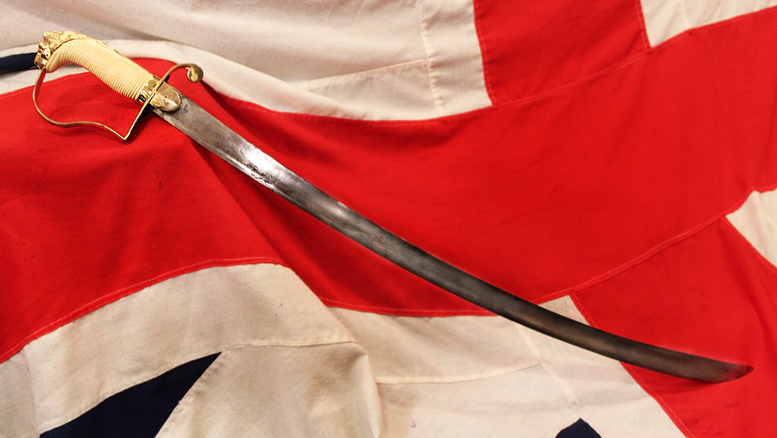A Singularly Beautiful & Magnificent Presentation Grade 1796-1803 {15th Hussars} British Officer's Sword, Of The Napoleonic Wars. Used In The Peninsular Campaign, & The War of 100 Days Culminating at Quatre Bras & Waterloo. Museum Quality Example
In stunning condition, near mint mercurial gilding, with bright polish blade bearing traces of GR cypher and Royal motto.
The 15th Hussars was converted into a Hussar Regiment, from a Light Dragoon regt. in 1807, before being sent to Spain for the Peninsular War (1808-14) a year later.
After joining up with Sir John Moore’s force, it successfully charged uphill through snow against French chasseurs and dragoons at Sahagun on 21 December 1808. It was evacuated from Corunna in January 1809.
After a spell of policing duties in the north of England, it returned to the Peninsula in 1813, fighting at Morales and Vitoria that year, and at Orthes and Toulouse in 1814. It also fought at Waterloo in 1815.
In May 1815 the Regiment, under command of Lt. Col. Leighton Dalrymple, returned to France to meet the threat raised by the resurrected Napoleon. In France, the Regiment was brigaded with the 7th Hussars and the 2nd German Hussars. Napoleon's rapid advance in June took Wellington by surprise, and the British cavalry were ordered to march at short notice, reaching Quartre Bras on the evening of 16th June. On 17th, the British, with the cavalry covering, fell back towards the village of Waterloo and spent a night bivouacked in the open in torrential rain. On the fateful morning of the 18th, the 15th Hussars formed a section of the British front line near Hugomont Farm, astride the Nivelle Road.
" . . a large body of Cuirassiers and other cavalry were seen carrying all before them on the open ground between Hugomont and La Haye Saint, and their Lancers were shouting in triumph. The brigade instantly moved towards its former post, and the 13th and the 15th charged and drove back the Cuirassiers, with the most distinguished gallantry, for some distance."
Based, primarily, on Wellington's own comments, some historians have expressed admiration of British cavalry actions at Waterloo - in the mud, blood and heat of battle, the contribution to victory made by both the heavy cavalry, such as the Scots Greys and the Inniskillens, and the light cavalry, such as the hussar regiments, is remarkable.
At Waterloo, the 15th Hussars lost 3 officers and 25 other ranks killed, together with 42 horses, and 7 officers (including Col. Dalrymple) and 43 other ranks wounded, together with 52 horses. After the battle, the Regiment pursued the French to Cambray and then to Paris, returning to England (Hounslow) in May 1816.
The hilt retains almost all its original finest mercurial gold covering, and a stunning line engraved grip, and sea ivory grip. The scabbard similarly draws the eye to the importance of the entire piece. Its highly distinctive appearance brings us very much to mind a strong possibility it was presented to an officer of the 15th Light Dragoons, likely for conspicuous service in the Peninsular campaign. In the early 1800’s the regiment commissioned a specific design of highest quality mameluke hilted dress swords, without knuckle bow, and a carved marine Ivory hilt, for officers of the regiment, and with this highly distinctive rare scabbard pattern, a rare scabbard pattern is so similar that we feel this sword was the alternative dress-cum-combat version. We therefore judge this very sword's design may well have influenced by the pattern of the 15th Hussars regiments officer's deluxe quality mameluke made during the Georgian period, but the 1796 p hilt was far more effective as a combat sabre for a secure grip in the charge.
This sword's blade slides neatly into the amazingly decorated sheath, of engraved mercurial gold copper-gilt panels, with a black leather base, and twin fine ring mounts. This wondrous sword is somewhat similar quality to the Lloyds Patriotic Fund swords, and other highest grade presentation quality swords awarded to officers during wars with France, during the reign of King George IIIrd, in the early 19th century. It would have been commissioned from by one the finest London makers, such as R. Teed of Lancaster Court, or Thomas Gill of St James's, as there are certainly elements of workmanship similar to both Gill and Teed's finest craftsmanship. The blade is polished with areas of age staining and once bore fine engravings and the king's cypher and motto. Lloyd's Patriotic Fund was founded on 28 July 1803 at Lloyd's Coffee House, and continues to the present day. Lloyd’s Patriotic Fund now works closely with armed forces charities to identify the individuals and their families who are in urgent need of support.
The contributors created the fund to give grants to those wounded in service to the Crown and to set up annuities to the dependents of those killed in action. The Fund also awarded prizes to those British combatants who went beyond the call of duty. The rewards could be a sum of money, a sword or a piece of plate. The Fund issued 15 swords worth £30 each, to midshipmen, masters' mates and Royal Marine lieutenants. Also, 91 swords worth 50 pounds each went to naval lieutenants and Royal Marine captains. It issued 35 swords worth £100 each to commanders and naval captains. In addition, it issued 23 swords, worth £100 each, to naval captains who fought at Trafalgar. Some 60 officers requested a piece of plate of equal value instead of a sword. Lastly, a number of officers opted for cash instead, either for themselves or to distribute to their crew.
One engagement might result in multiple awards. When a cutting-out party from HMS Franchise captured Raposa in 1806, naval lieutenants John Fleming and Peter Douglas, and Lieutenant of Marines Mend, each received a sword worth £50, while Midshipman Lamb received one worth £30.
Not all the officers who received swords or other merit awards were naval officers or Royal Marines. Some were captains of privateers or East Indiamen. The Fund awarded Mr. Thomas Musgrave, captain of the private man of war Kitty an honour-sabre worth £30 for the action in which Kitty captured the Spanish ship Felicity (or Felicidad). After the Battle of Pulo Aura, Lloyd's Patriotic Fund gave each captain a sword worth £50, and one to Lieutenant Robert Merrick Fowler (RN), who had distinguished himself in a variety of capacities during the engagement, and one worth £100 to Captain Nathaniel Dance, who had been the commodore of the fleet.
Napoleonic period original painting in the gallery of Capt. George William Manby, with his near identical Prize Presentation Sword, painted in 1818, by Samuel Lane..
Code: 21774
7750.00 GBP


